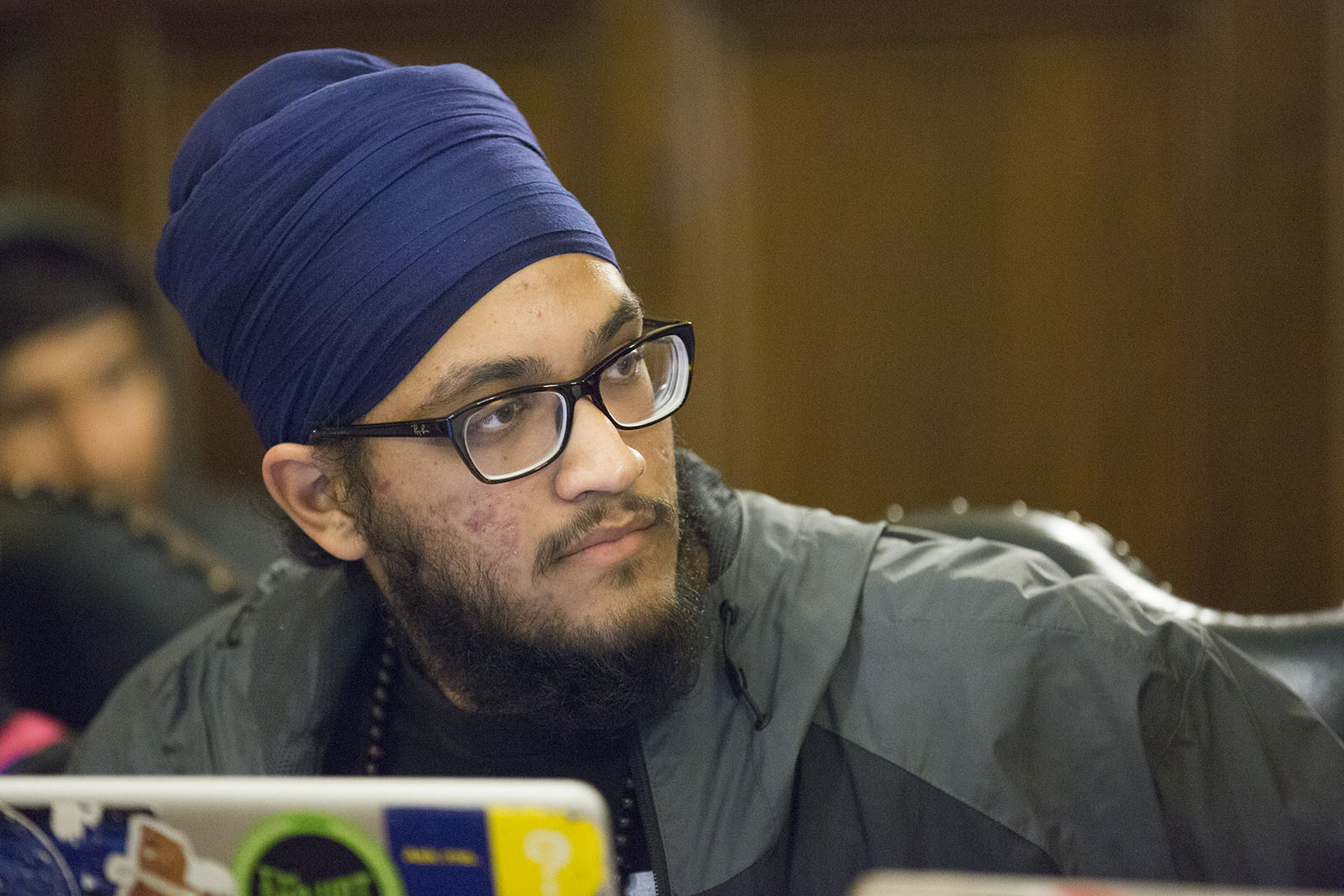Aram Ghoogasian: USAC should take concrete steps to establish on-campus prayer space

General Representative 1 Manjot Singh is co-sponsoring a resolution at the Undergraduate Students Association Council meeting Tuesday to advocate for a nondenominational prayer space on campus. (Austin Yu/Daily Bruin)
By Aram Ghoogasian
April 14, 2015 12:25 a.m.
Student government resolutions can’t enact change on their own. The effort that sometimes succeeds their passage, however, can.
At the Tuesday Undergraduate Students Association Council meeting, the USAC General Representative 1 office will introduce a resolution in the hopes of establishing an on-campus space dedicated to prayer and meditation.
The discussion shouldn’t take very long and the resolution’s passage should be swift and easy, but it has no actual effect except to express the council’s symbolic support of the prayer space. This expression of support, while a positive thing, seems rather empty compared to actually securing support from the administration. A resolution looks like progress, but, simply put, it isn’t.
To be clear, a resolution doesn’t hurt; it’s good to send a message to the administration about the students’ wants and needs. Fortunately, a number of student representatives have already spoken with the students’ association board of directors to advocate for the project, a much more direct method than a symbolic resolution. To keep making progress, the council members pushing for this space should make sure they don’t stop at passing a simple resolution, but continue making concrete steps toward their ultimate goal.
If ASUCLA gives them the green light, council members and supporters of the space need to prove to the board that financing the prayer space is beneficial to students and is something that should continue long after these student organizers have graduated. This will take more than a resolution and rhetoric to accomplish.
One way to prove the space’s worth is to make it educational. The project should maintain an educational theme in the style of the newly passed diversity requirement for the College of Letters and Science. Allowing for people of different faiths not only to use the space to pray and meditate, but to educate their fellow students about their religions on a regular basis could turn this well-intentioned idea into an even more effective endeavor.
Besides praying together in the same space, representatives from different religious student organizations, like the Sikh Student Association, Muslim Student Association and various Jewish student groups, could make brief presentations on their religious practices to educate anyone interested.
While the resolution on its own may not result in anything tangible, the prayer space itself is a practical idea that council members and student organizers need to turn into a reality. Muslim students, for example, currently don’t have a convenient space to pray on or near campus. Catholic students have the University Catholic Center on Gayley Avenue and Jewish students have Hillel, but Muslim students often have to make their own makeshift prayer spaces because they don’t have a space to call their own. They have often been relegated to the space behind Kerckhoff Hall for lack of a better location.
People belonging to less mainstream religions could also use the space if they lack one on campus or nearby.
A nondenominational prayer space was established in the John Wooden Center in 2010, but it has since been abandoned. Last year’s General Representative 1 Sam Haws attempted to reestablish the space in the Wooden Center, but gave up on finding another location after being rejected. Good intentions and a USAC resolution won’t cut it. This year’s attempt should explore as many locations as possible to finally establish the space.
The idea for a prayer space comes with a dark backdrop. When someone thinks of religious discrimination at UCLA, one likely thinks of Rachel Beyda. Beyda’s near-rejection for a position on the USAC Judicial Board made national headlines after four council members initially voted against her appointment, citing her Jewishness or citing nothing concrete at all. This was followed by the fliers targeting Students for Justice in Palestine, only the most recent in a long string of examples of Islamophobia and anti-Semitism on campus.
Of course, saying this is a solely Jewish or Muslim issue is to ignore the complexities of religious discrimination. While anti-Semitism and Islamophobia are often the two largest problems cited when discussing religion on campus, students need to remain cognizant of the difficulties people of most religious backgrounds face. This is why a unitary, nondenominational space can be so useful.
If carried out properly, initiatives such as these could change the way a good number of students view people that hold different religious or spiritual beliefs. Creating a space for people to come together doesn’t automatically mean they will, but giving them the opportunity to do so is a positive step and one that should be taken. It doesn’t hurt to try.


